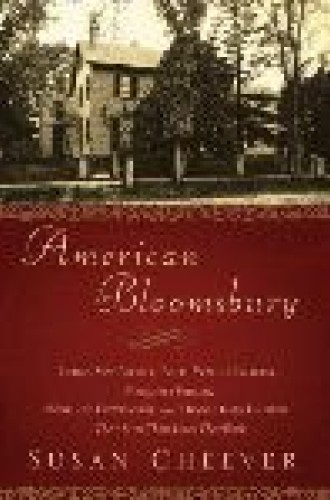American Bloomsbury
Susan Cheever’s book is found in the history or literary criticism section of bookstores and libraries, but thankfully Cheever does not repress her remarkable creativity as a novelist and memoirist in her first attempt at a more academic book. She knows what makes for a good story: carefully drawn characters, compelling personal and societal conflicts, and language that is both intellectually and emotionally acute. Few other writers could explore this enormous topic with such skill.
The title refers to the infamous turn-of-the-century London Bloomsbury group (which included Virginia Woolf, E. M. Forster and John Maynard Keynes), to which Cheever likens the 19th-century explosion of literary genius in Concord, Massachusetts (then a community of only about 2,000 residents). The lengthy subtitle begins to suggest the challenging breadth of this 240-page book. In a loose chronology readers follow the passionate intellectual sparring and frequent love triangles of these quintessentially American writers from 1840 until 1868.
Other nearby literary giants and friends also pass through or get pulled into the mix: Melville, Poe, Whitman, Longfellow, Dickinson and Henry Ward Beecher (not to mention Oliver Wendell Holmes and Horace Mann). Cheever believes that the collaborations of these writers with each other and with the Concord landscape led to “almost every nineteenth century American masterpiece—Walden, The Scarlet Letter, Moby-Dick, and Little Women—as well as the ideas about men and women, nature, education, marriage, and writing that shape our world today.”
While it may be difficult to defend this claim, given the work of Twain, Chopin, Dreiser and others, Cheever’s point is a good one, and the book is a riveting introduction to this powerhouse literary community and to how the social and family lives of these writers shaped their work. We move back and forth between print and person:
Louisa May Alcott was in love with Thoreau, who serenaded her on his flute, and then with Emerson. This Yankee Plato lent her books about sexy young girls and their older teachers . . . that had been translated by his good friend Margaret Fuller. Emerson in turn exchanged love letters with Margaret Fuller while she was staying as a guest in his house. Fuller died in a shipwreck which is described in a Louisa May Alcott novel. The novel titled Moods is about a young woman . . . who falls in love with an Emerson-like intellectual and a man at home in nature like Thoreau.
We later discover that Henry James wrote a damning review of Moods, yet appropriated Alcott’s defiant character Jo March (from Little Women) as a model for his own character Isabel Archer in his Portrait of a Lady. Still later we learn of Nathaniel Hawthorne’s inviting Herman Melville to stay with his family, and of their brief, intense relationship and how it influenced the characterization and moral themes in Hawthorne’s The House of Seven Gables and Melville’s Moby Dick (novels which, for a short time, they were working on in the same house).
It seems that Cheever’s intention with American Bloomsbury is to describe the intellectual and social milieu of the era in engaging, accessible prose for a wide readership. In spite of this daunting ambition for a small book, she more than succeeds. This brief book can serve only as an introduction—and more to the community than to the writers’ works. The benefit of this approach is that after reading American Bloomsbury readers will be able to read books by any of the Concord writers with a much higher level of engagement due to their newfound understanding of the historical and thematic implications. This alone makes the book an important achievement.
My one quibble with the book is that it gives minimal attention to these writers’ philosophical underpinnings—to transcendentalism and the religious and spiritual roots that pulled this group together (or pushed its members apart). Cheever introduces some basic ideas: the focus on an individual’s power of intuition as a kind of divine spark or inner light, for example. She quotes Paul Brooks: “The Unitarians had pronounced human nature to be excellent; the transcendentalists pronounced it divine.” But an introduction to this community would have benefited from a few more paragraphs about where those core beliefs came from and how they aligned with and conflicted with Puritanism, Calvinism and humanism.
But that is of minimal concern. On the whole this is a well- researched academic work that reads like a novel because of Cheever’s rare eye and ear for intimate revelatory details—details that she has somehow sewn together into an enthralling piece of American literary history.






